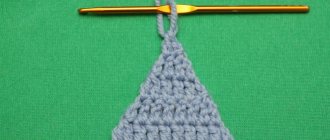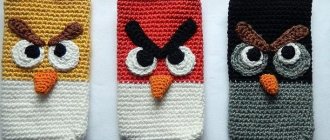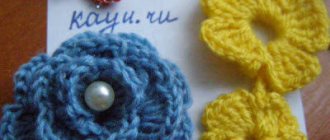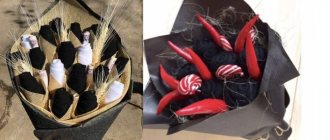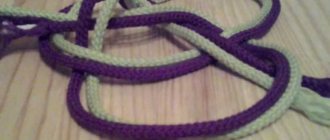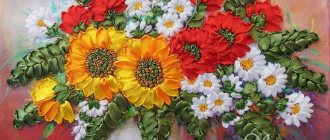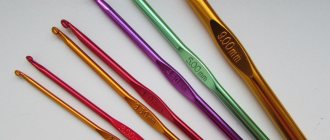- 76762
- 13-10-2020
- Author: Mysekret Team
- 1
Crocheted slippers add coziness and neatness to the home, and give its inhabitants warmth and maintain health. In addition, these indoor shoes not only save you from the cold floor, but can also perfectly lift your mood. In addition, products like crocheted slippers will be a wonderful gift for a variety of holidays, including New Year’s. Therefore, you should definitely learn how to crochet slippers.
What do you need for knitting?
Beginners will need step-by-step diagrams, instructions and a detailed description of the work to easily understand the patterns and the crocheting process.
You will need the following materials:
| Material | Volume/Size | Quality | Advice |
| Yarn | adults: 150-200 g children: 100-150 g | pure wool or wool with acrylic | choose dense yarn; if the thread is too thin, then use 2-strand knitting |
| Insoles | for sizes 37-38 the recommended insole length is 24 cm | thick felt | Thin felt plates sewn into the heel area will help increase wear resistance |
| Hook | №3,5 | — | choose a hook 2 times thicker than the thread: it will be more convenient for you to work |
| Mating | — | double crochet or single crochet | try to knit tightly so that the product holds its shape, even if you are making an openwork pattern |
Yarn for slippers
As for the threads that can be used, it is best to take:
- For winter models - wool in combination with synthetics. Choose an appropriately soft yarn, as wool tends to ripple. Pure synthetics can stretch during wear - it is not advisable to use such yarn. Pure wool, on the contrary, can mat and the product will become smaller than necessary.
- For summer models, cotton and linen are good options. It's better to crochet slippers.
Home slippers with felt soles
The sole should be dense and warm. It’s easier to take a ready-made felt insole - such slippers turn out to be soft, warm and very light. We offer a simple model made with a regular single crochet stitch.
The operating procedure is as follows:
- Buy a ready-made sole at a shoe store (cost from 30 rubles) or cut it yourself from felt for free. Choose an insole one size larger to leave room for the seam.
- Make holes in a circle at a distance of 0.5 cm from each other and 0.5 cm from the edge of the insole. For work, use an awl or a thick needle.
- Tie the insole along the edge on the inside of the heel with a single crochet. It is better to start from the heel - this will help to hide the end of the thread unnoticed. The total number of loops is 96 (for size 38).
- Knit four rows: try to keep the knitting tight - so insert each new stitch into both arms of the previous row. Cut the thread.
We've got the instep ready - now let's take care of the toe. Find the center and work 6 single crochets, turn and pick up the next row. Don't forget to grab the side of the product at the end of each chain to tie it together.
Continue knitting, filling the toe section. The result should be 24 columns and 23 rows. On the 24th row, start knitting in the round, securing the last stitch to the toe. Knit five more elements in this way, after which the product will be ready. If desired, you can decorate the slippers with beads, beautiful buttons or an inscription.
Seamless slippers
Knitting slippers on two knitting needles without a seam is performed using the following technology:
- Knit the fabric in garter stitch, dividing it into 3 parts. There will be a sole in the middle, and two side parts will form the product itself.
- When the desired length is reached, continue knitting with an elastic band to a height of about 5 cm.
- Gather the edge of the elastic onto a thread, forming a specific sock.
- Make several seams with a needle, connecting 2 parts of the fabric from the sock.
- Also connect with a needle along the heel, forming a loop of thread.
How to knit men's slippers?
Men prefer to wear flip-flops at home: they are comfortable to put on, do not wear out for a long time and look neat.
We will look at a master class on knitting a product with a closed nose, but if you are knitting for the summer, then leave the nose open.
Preparatory work:
- choose a suitable sole: you can cut it from felt or take it from old shoes;
- make holes in a circle with an awl or a thick needle;
- knit it with stitches in a circle - the insole will be attached to them.
Sole binding:
- We prepare a pigtail from air loops (it should be shorter than the sole itself);
- we knit in a circle with single crochets, gradually adding 3 loops on the heel and toe (this will help from bending);
- we continue to knit - the insole should take the shape of the sole;
- walk 2 more circles: the insole will be larger in size (so that you can then tuck it under the bottom);
- connect the knitted insole to the sole, securing the thread to the previously prepared stitches.
Flip-flop top:
- cast on 9 chain stitches;
- We knit rows 2-6 with single crochets, adding 2 loops to the fabric: in the middle and along the edges (it turns out to be a herringbone);
- 7-20 rows increase the fabric by one loop in the middle;
- after the 20th row we continue to knit, retreating from the middle of 5 loops;
- at the same time decrease 1 loop on the sides each row - in the end you should have one left that needs to be closed;
- from the other edge we perform the same operation.
Final works:
- use yarn of a different color to finish the top;
- if desired, you can embroider an inscription (in our case, Airborne Forces) and even a small drawing or pattern;
- Use a needle and thread to tighten the sock - the product will become convex;
- we sew the upper with the insole, the work will be more accurate if you sew the parts together not with a crochet hook, but with a needle and thread;
- The bottom is tied with a contrasting thread: to do this, we knit a chain of air loops and sew it to the product.
Conventions and abbreviations in master classes
Legend:
| Designation | Definition |
| persons | Face loops |
| R. | Row |
| purl | Purl loops |
| vm. | Together |
| persons Art. | Front side |
| last P. | Last loop |
| track. R. | Next row |
| chrome | Edge loop |
| V. P. | Air loops |
| plat. elm | Garter stitch |
| purl Art. | Wrong side |
| nak. | Yarn over |
Knitting from squares
Colored crocheted squares are easy to knit and look great in the finished product: the slippers are bright, colorful and cheerful. There is no limit to your imagination: use a variety of colors and motifs. The instructions are simple: each square is knitted separately and then sewn with the others.
You should start with squares - their total number should be 12 for one pair of slippers.
Knitting pattern: 3 air loops are connected into a ring, after which the rows are raised with double crochets. Combine different colors: shoes will benefit from this.
Follow these simple tips:
- assemble the squares in single crochets: for strength, insert the hook into both arms;
- use yarn of different colors: the product will look more interesting;
- so as not to cut the thread each time, connect the squares on one side;
- end the connection at the sole, where you can neatly hide the thread.
Connect the five elements according to the indicated pattern. The sixth square is connected to the neighboring ones by only three columns. This creates a backdrop that looks very beautiful when turned up. Perform final finishing around the entire perimeter. Carefully hide all excess threads in the seam.
Care
Knitted or crocheted slippers require careful care. Like any house shoes, they can become contaminated by household contaminants (grease splashes, dust, animal hair). You need to get rid of them immediately by carefully washing them with warm water and a mild detergent. Washing slippers in a washing machine is contraindicated, since the structure of the knitted fabric can be damaged. When combining several colors of thread, washing in hot water can cause them to fade onto each other. If crocheted slippers with felt soles become dirty on the underside, the outsole can be carefully peeled off and cleaned, and then reattached.
General contamination of the product is removed by hand washing with water at a temperature not exceeding 30 °C. In this case, you should not use any force when unscrewing. It is enough to squeeze it lightly and then lay it flat to dry.
It is better to store the product in a dry place, protected from bright sunlight. Once a month, it is advisable to air your shoes to prevent moths. If the flip-flops become dirty as you wear them, you should clean the product before putting them away for storage.
Crocheted slippers are an original solution to the problem of indoor shoes. For many, they are not only a household item, but also a symbol of comfort and home. A bright, unconventional design will help emphasize the individuality of the owner.
Hand wash in warm water
Store in a dry place, away from sunlight
Ballet shoes
Slippers in the form of ballet shoes look feminine, elegant and are easy to make with your own hands. You can find thousands of diagrams and descriptions on the Internet. Sometimes they only confuse the craftswomen, and it can be difficult to choose a model. We offer a universal pattern for knitting the sole and top. And you can design the finished product to your liking.
The process can be divided into 3 stages:
- Sole: air loops are cast on, then the shape of the insole is knitted in circles with double crochets.
- Top with sides: prepare a continuous fabric of double crochets according to the diagram. On the third row in the middle we knit a pattern (sock).
- Assembly: the top is sewn to the bottom with yarn of a different color.
The appearance of ballet shoes largely depends on the design. More often these are decorations in the form of flowers, bows, beads, etc.
We offer 3 design options to choose from:
| Flowers and leaves are a popular design for women's ballet shoes. You can tie a flower according to the following pattern: The tie serves not only for decoration, but also helps to adjust the width of the product. | |
| You can decorate the model with a bow, button and knitted flower. First, a bow is prepared from ribbon and sewn together with the flower to the sock. The composition is decorated with a button, also helping to hide the thread. The design can be done with knitting needles: knitting a flower and other decorations. | |
| The product does not have to be decorated with flowers and bows. Embroidery, inscriptions, as well as ballet shoes in the shape of cars and cute animals look interesting. Ballet flats - bunnies are a good example. Using stitches we make eyes and a nose. The ears are knitted in the form of an oval, then sewn to the product. Children are delighted with these ballet shoes and wear them with pleasure. |
Selection of material and tools
Crochet slippers consist of two components: the sole (insole) and the top. They can be knitted with threads of the same or different colors, and also made using other materials. The most commonly used combinations are:
- the sole is made of felt, the top is made of thread;
- sole – leather, upper – knitted;
- both parts are made of yarn.
If you choose an option with both knitted parts on the bottom of the flip-flops, you can sew a leather (or artificial substitute) insole. The crocheted sole should be the same size as the outer one, since as it is ready, they are tied together around the perimeter.
Knitted flip flops look elegant in a single color or melange design. To work, you need to take 50 g of yarn in two colors. It is better to choose acrylic threads, as they are more practical and behave well during washing and wearing. Knitted flip-flops with felt soles will keep you warm if you choose wool or wool blend yarn. Cotton threads, as well as combined options, are acceptable and loved by many knitters. If the composition contains synthetic fibers, this is welcome. These knitted slippers will last longer without fraying.
In addition to a hook and thread, you will need scissors, a gypsy needle or an awl. The size of the knitting tool depends on the chosen pattern and the thickness of the yarn. It should be remembered that the fabric should be dense, without large holes, and not prone to stretching. The selection of hooks and threads is carried out according to the following principle:
- to thinner ones - up to the second number, the pattern turns out smaller and denser;
- For knitting an openwork pattern from thick threads, a large tool is recommended.
For slippers, it is better to take a hook No. 2-2.5 and two layers of thread.
Acrylic threads
Woolen
Cotton
Crochet hooks
Sneakers for boys
Knitted sneakers for children look cute, stylish and boys like them. The work is not difficult, it is important to pay attention to the design, choice of colors and their combination. You can knit the sole yourself or use a ready-made one.
Let's consider the first option.
- The sole is knitted in the same way as in previous models: air loops are cast on and tied in a circle.
- The sides rise immediately without tearing off the thread: to do this, continue knitting in the round, but without adding loops. Number of rows – 4-5. In the middle, go through one row of yarn of a different color (brown in our example).
- We also start knitting the nose right away without breaking it: we use double crochets, and at the end we close the row with one loop.
- We continue to raise the sides, alternating colors. Try the sneakers on the boy - they should fit snugly to the foot. The number of rows is determined depending on the size: be guided so that the sneakers are above the ankle.
- We begin to knit the tongue to the nose, but do not change the width. In height it should be higher than the sides (by 3-4 rows).
- The tying of the sneakers is done step by step in the same color as the sole. Go through the tongue, sides and carefully hide the thread.
- The lace is a regular chain of air loops, threaded through the sides.
As with ballet flats, sneakers can be decorated with additional elements if desired. For example, a star, toy cars, an embroidered inscription, beautiful buttons and so on.
When using a ready-made insole, the procedure is the same: raise the sides, knit the toe and tongue. Sneakers with a ready-made insole are good for 5-year-old boys: they are constantly on the move and need models that are already wear-resistant.
Open heel
For this model, it is enough to knit a semicircular part of the required size. In this case, a special knitting pattern for slippers is not needed. It is enough to measure the width of the sole part and clarify the depth of the front part.
If desired, you can make a pattern on paper. And when the front part is knitted, periodically apply it to the pattern to make sure that the desired dimensions are achieved.
A little bit of Africa
The motives deserve a separate discussion. Not only is knitting them a truly exciting process, but you can also save a lot of money by using small multi-colored skeins left over from other knitting projects. The main thing is that the color scheme is harmonious, and the residues used are approximately the same in thickness and composition.
High boots made of hexagons are a great success among handmade connoisseurs. They are also called "African flower". This is a successful motif, a real find for lovers of ethnic style. It is not difficult to knit; patterns are freely available on many websites. And you can use such an element not only when creating cozy slippers-boots, but also blankets, pillows, clothes and toys for every taste.
The only negative is that connecting motives takes a lot of time. You will have to work hard to put all the elements together. For these purposes, you can use a needle or crochet hook. In the first case, the seams are more invisible, but in the second, on the contrary, they turn out to be voluminous and embossed. Whichever one you like best, choose the one.
- Paper toys - diagrams, ideas and options for making various toys with your own hands (110 photos)
Dymkovo toy - modern collections, their creation and features of making Dymkovo toys (115 photos and videos)
Knitting openwork patterns - diagrams and step-by-step master class on how to knit an openwork pattern quickly and easily (95 photos + video)
Crochet footprints
Crochet footprints - what could be simpler! However, there are some nuances here too. If you want to know how they are knitted correctly and what the different parts of the leash are called, here is a good and detailed information about it:

